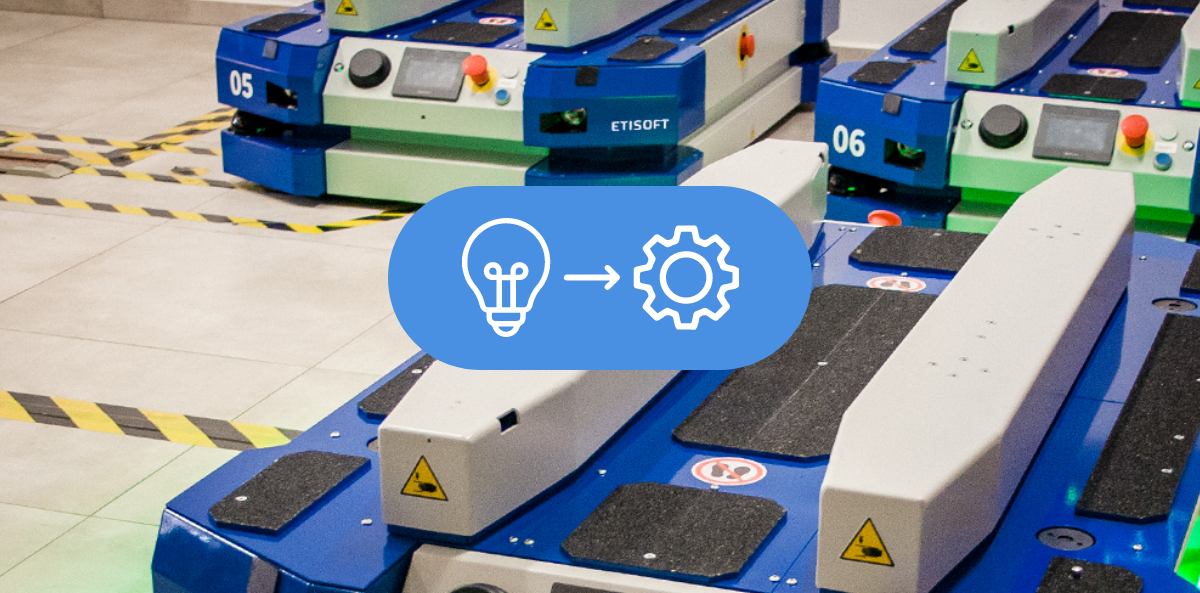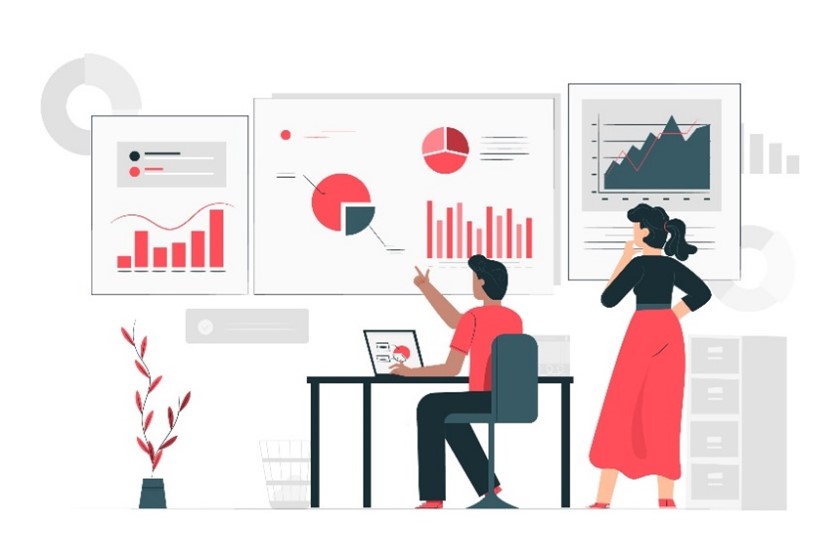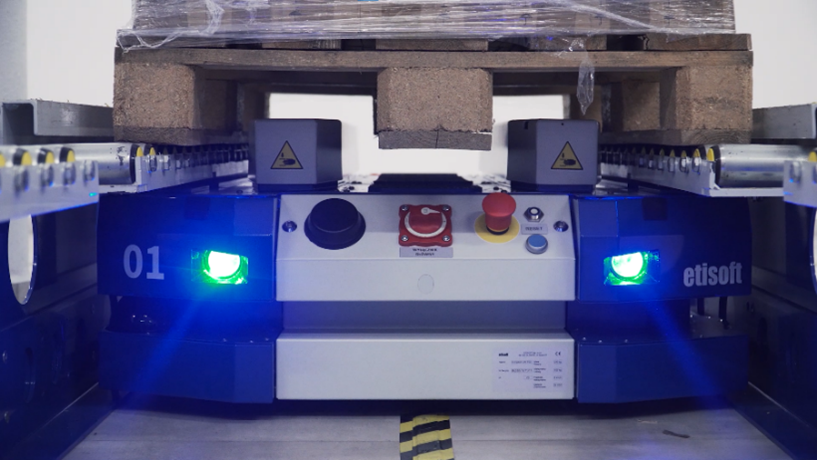
Intralogistics systems – implementation in 7 steps
The decision to invest in production facilities is always oriented towards at least one of the company’s four business objectives:
- more customers,
- more money (by increasing profitability or generating savings),
- fewer problems or worries,
- more free time.
The AGV/AMR-based intralogistics system has a positive impact on each business objective mentioned above.
Firstly, it generates more enquiries (sales leads) by providing customers with a modern factory equipped with reliable mobile robots. Additionally, a reference visit will make a lasting impression on many prospective customers thanks to the presence of autonomous vehicles.
Secondly, a very profitable ROI at current market rates for production employees is 3-5 years depending on the process and number of FTEs. What is more, government reliefs for robotisation shorten the payback time.
Thirdly, the responsibility of employees for the transport process is transferred to the intralogistics system that is predictable and does not make human errors, resulting from, for instance, fatigue.
Fourthly, it saves time.
- for operators, whose repetitive logistical activities can be automated and who can be engaged in more challenging tasks,
- for managers for whom the system can automatically generate reports and statistics thanks to the collected data.
Below we show how in 7 steps we guide the customer through the intralogistics system implementation process at Etisoft Smart Solutions.
1. Business analysis and consultation.
We begin the implementation of each project with a thorough business analysis of logistics processes by conducting consultations. First, a concept for improving company’s operations or solving the problem it is facing is created. During joint work of both our analysts and the customer, business objectives, process requirements, logistics needs and priorities as well as the limitations resulting from the existing process are specified. This analysis is then included in the form of a project outline. Our specialists help the customer to systematise and specify those processes which can be automated.

2. Pre-implementation analysis.
The next step is to design the system in accordance with the predefined functional assumptions. To this end, advanced numerical simulations are carried out, recreating the designed logistics processes in a particular production plant or warehouse.
This type of simulations of intralogistics systems are carried out in specialist simulation environments, i.e., for instance, FlexSim. It allows, among other things, for:
- visualisation of a customised solution,
- numerical determination of performance indicators,
- indication of project risks (e.g., bottlenecks),
- preliminary audit of the applied safety systems.

3. Business case.
At this stage measurable benefits which the implementation of the solution will bring are defined, i.e.,
- ROI (Return On Investment) calculation.
- Counting the opportunity costs, i.e., the equipment currently used, the number of FTEs, availability.
- Specifying the conditions under which the system translates into company revenue.
4. Implementation.
The implementation of the system is the most significant stage in the entire process, requiring a lot of engagement and close cooperation between the project team and the customer. Apart from the manufacture of all components of the system, we also provide comprehensive implementation services and training.
The implementation of the system always ends with a Site Acceptance Testing (SAT) which includes all elements of the process, performance testing and the infrastructure provided.

At this implementation stage:
- A project team is established (on the supplier side and on the customer side).
- An implementation schedule and budget are created.
- The intralogistics system is integrated with the existing systems of the customer.
- The implementation in terms of time and budget is supervised.
- Essential project documentation is kept.
5. Monitoring.
After the implementation of a fully functional intralogistics system at the customer’s site, in relation to the provided warranty, we carry out periodic system inspection within which:
- Our specialist regularly logs into the online system and makes sure that the system is operating properly.
- We record the number of transported logistics units (e.g., pallets).
- We extract the median and average time for the acceptance of a transport order (from the call to acceptance by a robot).
- We extract the median and average time for the execution of the transport mission (from the call to the order completion).
6. Post-implementation support.
After the system start-up, the customer receives a free 10-day support period by ESS engineers with increased readiness to provide direct post-implementation support.
We negotiate all the details individually when formulating the contract for system implementation. There is also an option of concluding an SLA (Service Level Agreement).
7. Maintenance.
Depending on the contract, we provide various forms of post-implementation support – from warranty care to service to 24/7 technical assistance.
The maintenance services we can offer our customers at the contract formation stage include:
- Telephone assistance with 24/7 option.
- Helpdesk portal.
- Essential warranty repairs.
- Quarterly technical inspections and service.
- Minor software development of the system for the customer.
- Generating analyses and reports.
Our project experience enables us to present the legitimacy of implementing our solutions, supported by real data from customers who have demonstrated profits with the help of our implementations. Interested?
